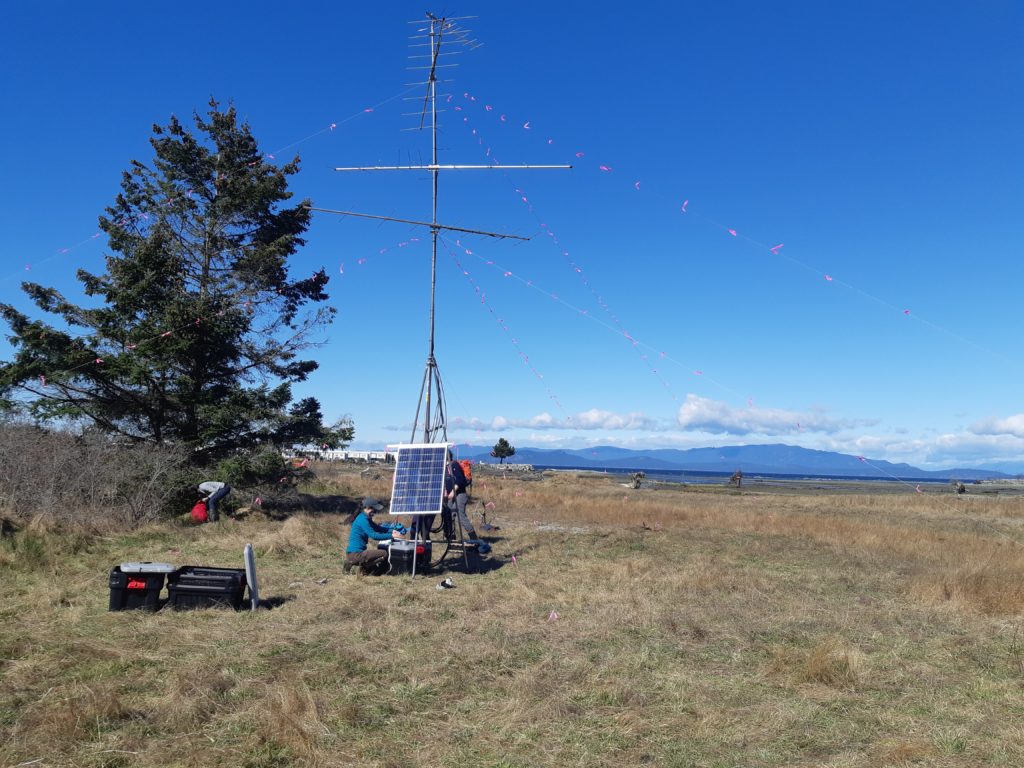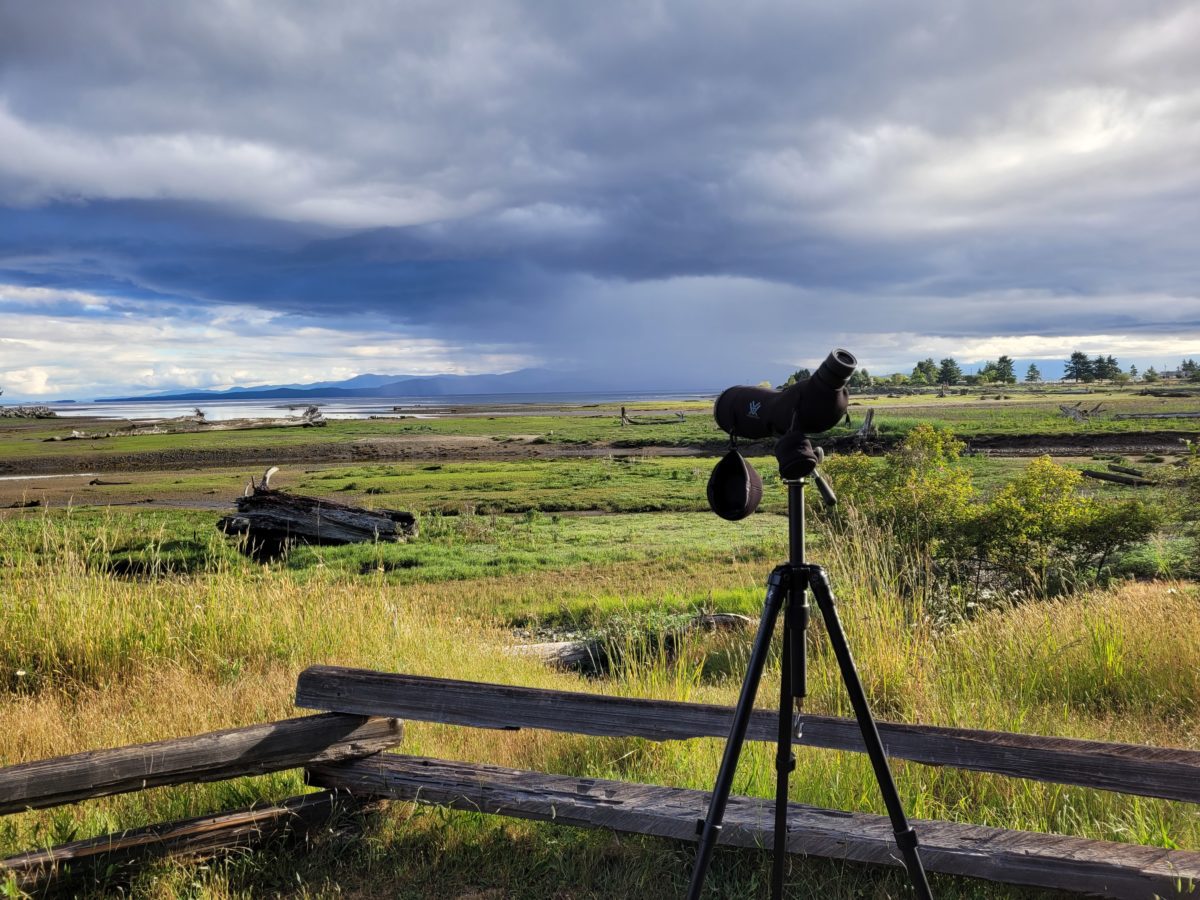
Curtis Rispin, The Nature Trust of BC’s Senior Restoration Technician on Vancouver Island, has been working on a project that aims to restore natural coastal and river functions within the Englishman River Estuary. This project will improve resilience to climate change and sea-level rise, along with habitat for fish and wildlife.
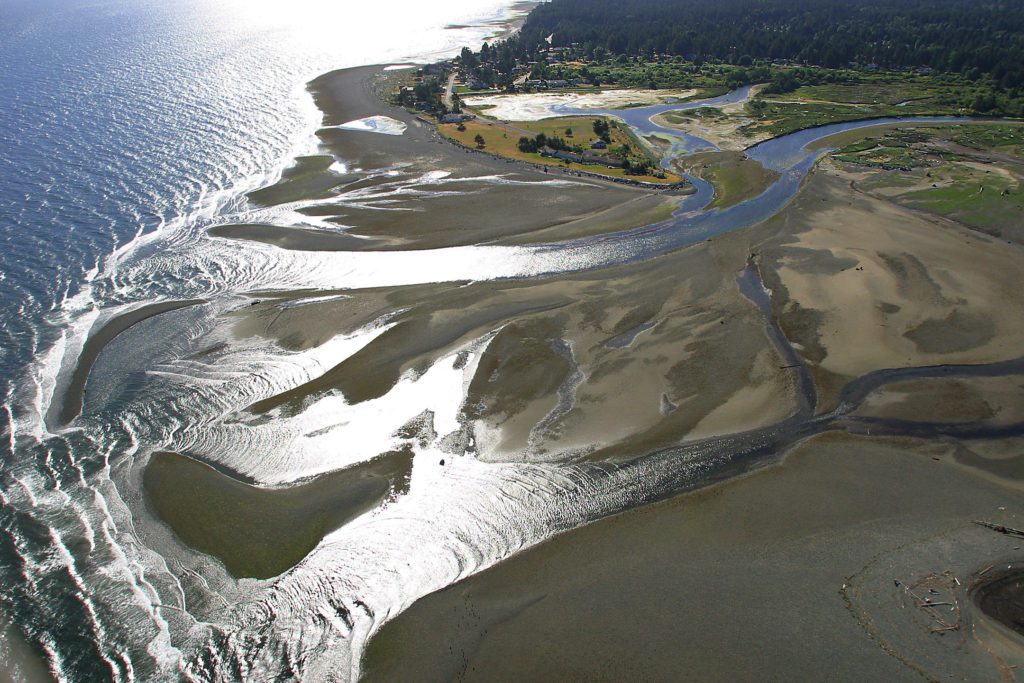
Restoring an estuary like Englishman River is a big project, with a broad array of restoration activities. Curtis and the Vancouver Island Field Crew have been working on removing dikes and tidal constriction in the western estuary, creating marsh benches and tidal channels, widening the existing berm opening that was disrupting natural flow regimes in the estuary, removing invasive species, installing large woody debris for habitat complexity in tidal channels, and planting native plants.
An important part of this restoration project is effectiveness monitoring to assess how wildlife, amongst other natural factors, are responding to the activities that have been carried out over the past four years. Shorebird surveys are done to measure abundance and diversity of birds and how they are utilizing the estuary. The surveys are funded by The Nature Trust’s partners, the Habitat Conservation Trust Foundation.
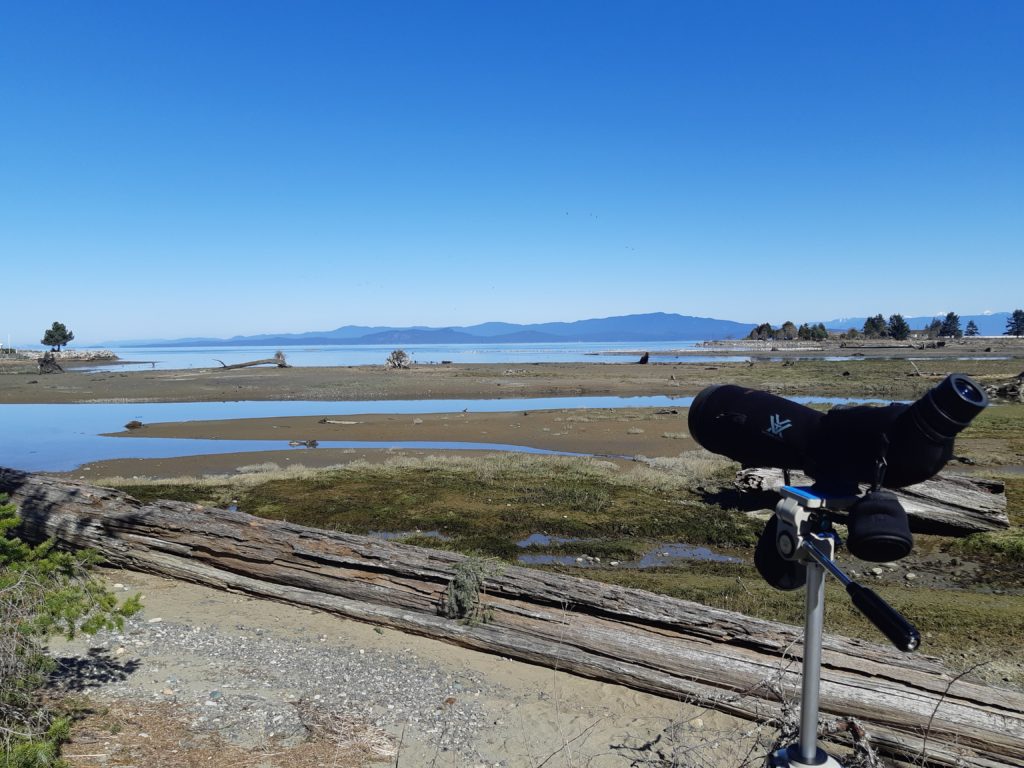
Eight shorebird surveys were conducted last year during the spring and fall migrations, at three locations in the estuary. Some Species observed at Englishman River Estuary include: Western Sandpiper, Least Sandpiper, Semipalmated Plover, Semipalmated Sandpiper, Long-billed Dowitcher, Short-billed Dowitcher, Spotted Sandpiper, Black Oystercatcher, Wilson’s Phalarope, Baird’s Sandpiper, Lesser Yellowlegs, Greater Yellowlegs, Pectoral Sandpiper, Black Turnstone, Black-bellied Plover, Pacific Golden-Plover, Killdeer, Dunlin, and Sanderling.
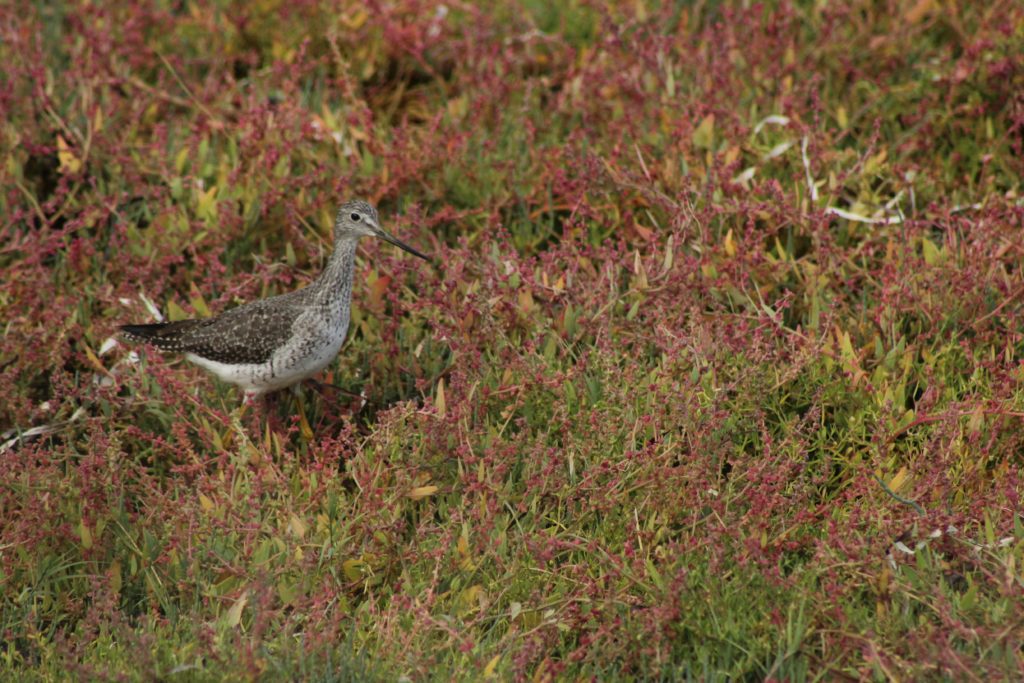
Greater Yellowlegs
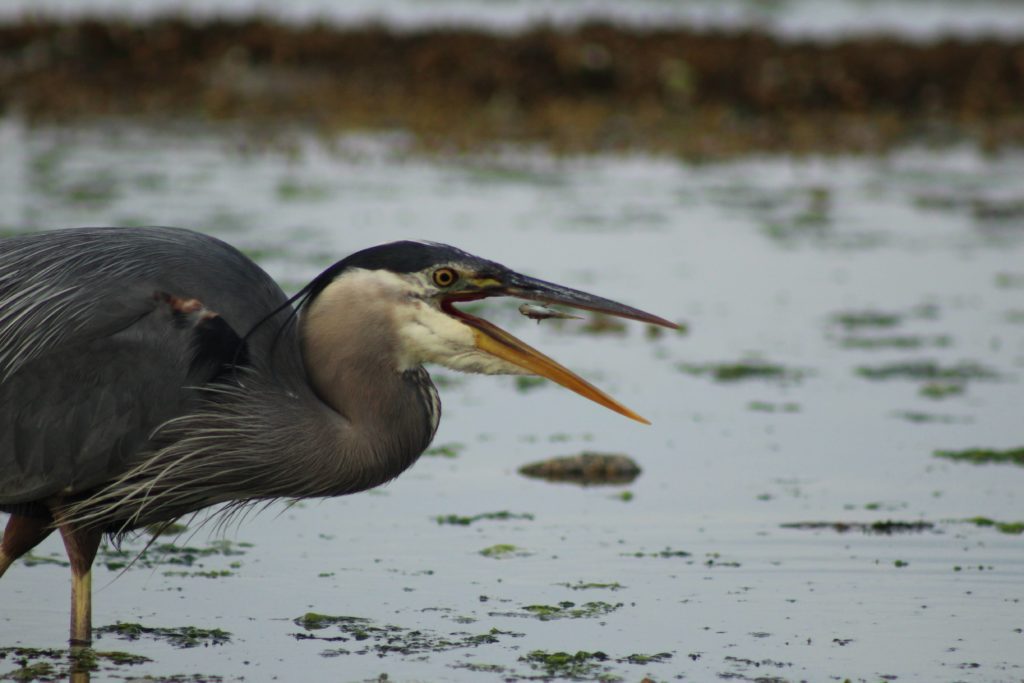
Great Blue Heron, feeding
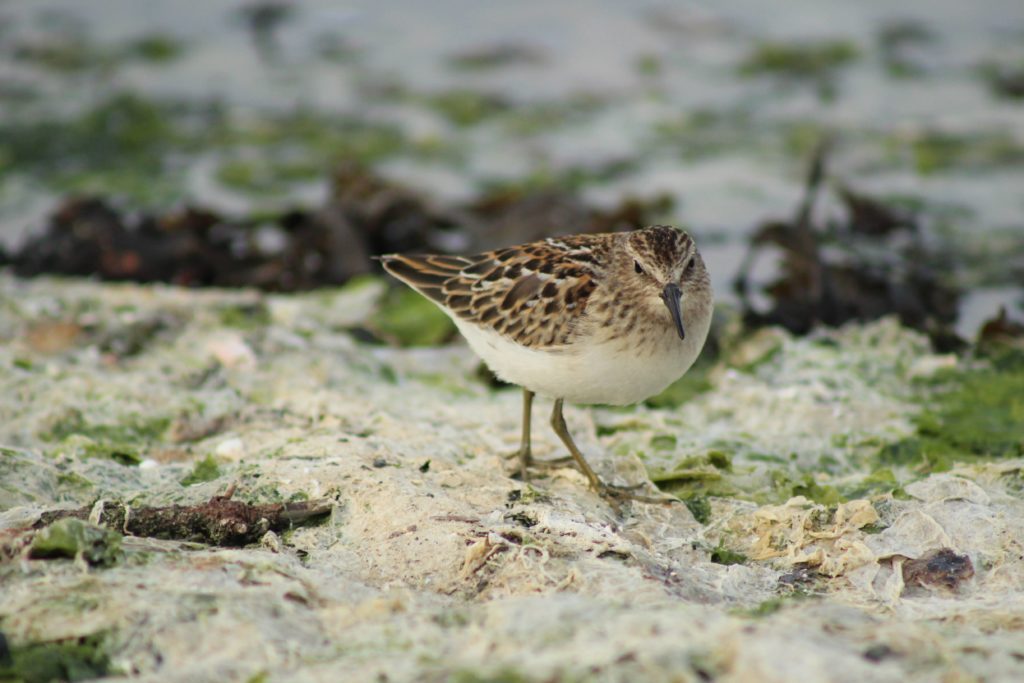
Least Sandpiper
Other effectiveness monitoring activities include: waterfowl surveys, breeding bird surveys, marine invertebrate surveys, and monitoring coastal processes by measuring the changes in hydrology and surface elevation of the salt marsh platform.
Additionally, The Nature Trust has recently teamed up with Birds Canada, Canadian Wildlife Service, and Environment and Climate Change Canada to expand the MOTUS tower network, which tracks shorebird movements throughout North, Central, and South America. Towers were installed at some of The Nature Trust’s key conservation and monitoring areas, including the Englishman River Estuary. This will help us understand the movement and use of shorebird stopover sites along Vancouver Island and the Pacific Flyway, the north-south migratory bird route spanning from Alaska to South America.
